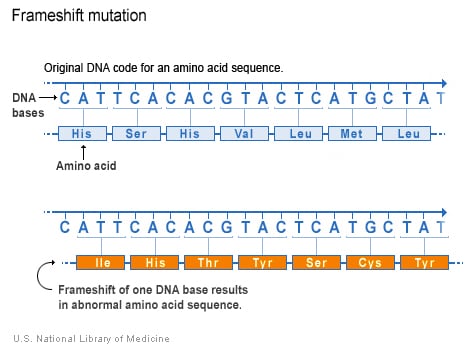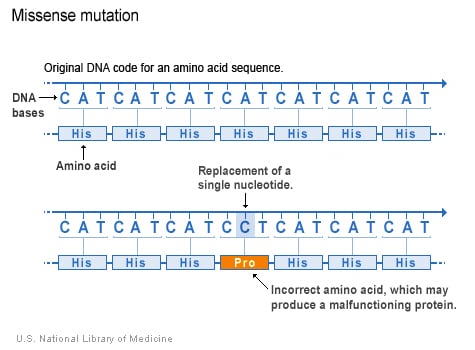The genetic code is the set of instructions in a gene that tell the cell how to make a specific protein. A codon is a trinucleotide sequence of DNA or RNA that corresponds to a specific amino acid. There are 64 different codons of which 61 specify amino acids while the remaining three are used as stop signals. The start codon is the first codon of a mRNA transcript translated by a ribosome and it is AUG which codes for the amino acid methionine. Stop codons halt translation and are UAA, UGA and UAG.
Nonoverlapping and contiguous: codons are continuous
Unambiguous: each codon specifies only one amino acid
Degenerate: an amino acid may be coded by more than one codon. The wobble position of a codon refers to the 3rd nucleotide in a codon. Changes are seen in wobble position in codons for a single amino acid.
Universal: the same code is used everywhere, including plants, humans, and microbes.
Mutations: A mutation is a change in the base sequence of DNA.
Point mutations are changes in a single nucleotide base. Point mutations can be of the following types:
i) Silent: New mutation still codes for the same amino acid as before, so there is practically no change.
ii) Missense: New mutation changes the codon in a way that it now specifies another amino acid, e.g., in sickle cell anemia due to a missense mutation (GAG to GTG), amino acid valine is formed instead of glutamic acid
iii) Nonsense: New mutation produces a stop codon, which prematurely stops translation and leads to the formation of a truncated protein product.

